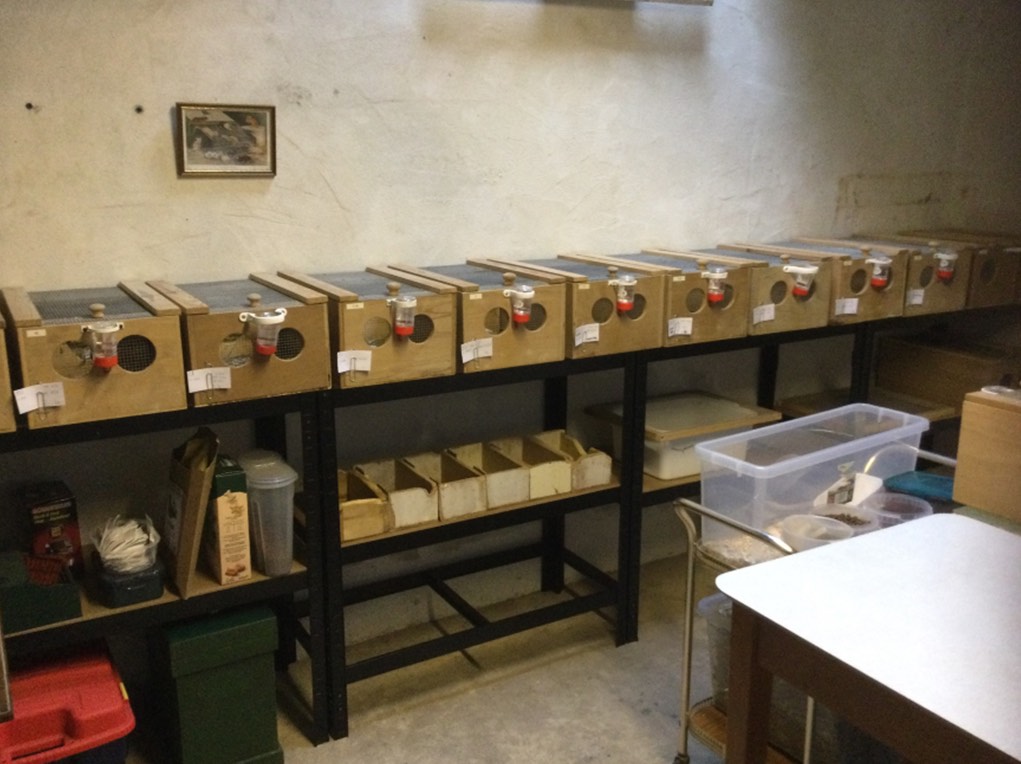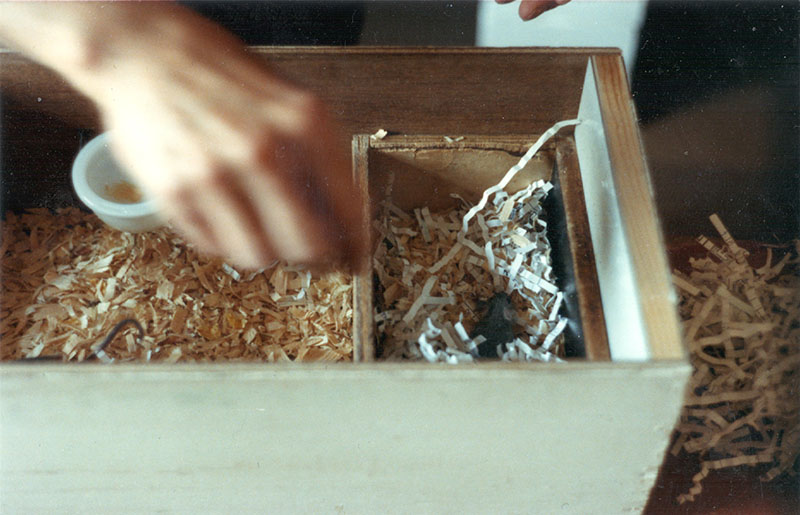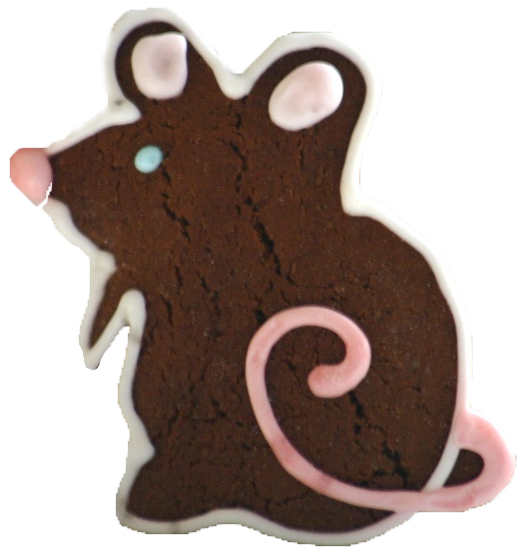Undoubtedly, one of the advantages of mice compared to other exhibition livestock is the relatively small amount of space required to house them. Not only that, but their housing is both inexpensive and simple, and there are three main types of accommodation that breeders use: 1) Traditional wooden boxes. 2) Plastic tubs such as those sold by Really Useful Boxes (RUBs). 3) Purpose-made plastic lab cages.

My mouse boxes
Each has its own advantages and disadvantages, the obvious ones being that wooden boxes are considered to be warmer and cosier, while plastic tubs are considered to be more hygienic. Whichever type you use, ensure it is large enough and has good ventilation.
I use traditional wooden boxes, all identical, and measuring 18 x 11 x 9 inches high. Each has a separate removable nest box, an external holder to attach a water bottle, and a large paper clip to secure an information ticket.

Breeding box with nesting compartment
I have created a room in the rear two-thirds of the garage to use as my mouse shed, and all thirty wooden boxes are laid out on one level rather than on racks. This is because my disability prevents me from lifting and carrying boxes at feeding time. Instead, I push a trolley of food from box to box.
They are cleaned out once a week, and the portable nest box means I can transfer a very young litter into a clean cage with minimal disturbance. I have roughly twice as many internal nest boxes as I have cages, which allows them to be rotated and sprayed every week. If the cage has become moist, I’ll sprinkle some diatomaceous earth into the corners to prevent mites.
The garage is of brick and stone construction with a tiled roof and a concrete floor, so never seems to be too hot or too cold, and the mouse room measures about twelve feet square. There is a Velux window in the roof for light, and ventilation is via a mesh panel above the doorway. A big advantage is having a power supply and electric lighting.
I also have three large RUBs that are used as running-on cages. I think many people that use RUBs cut a section from the lid and replace it with mesh, thereby allowing the lid to still be clipped on securely. I haven’t done that. I created a new mesh lid on a wooden frame to slot over the tub, which means I can use one of the RUB’s handles to hold a 150ml standard water bottle in place. The 64-litre size RUB is perfect for this.
Aubiose hemp bedding is used on the floor of each box, and I put their basic food mix into glass pots. The pots allow me to monitor how much they are eating and probably avoid wastage, though our chickens will eat any leftovers in the bedding on cleaning out day, so nothing is truly wasted. Used Gu pots, which are cheap and easily found on eBay, are the type of pots I use. Supplementary foods are just placed in the box.
A quality, dust-extracted meadow hay is provided as bedding in the nest boxes. I think good hay is of enormous benefit to mice, but it must be good. If it smells lovely to you, it will smell fantastic to the mice.
 We use cookies to ensure that we give you the best experience on our website. If you continue to use this site we will assume that you are happy with it.
We use cookies to ensure that we give you the best experience on our website. If you continue to use this site we will assume that you are happy with it.
0 Comments